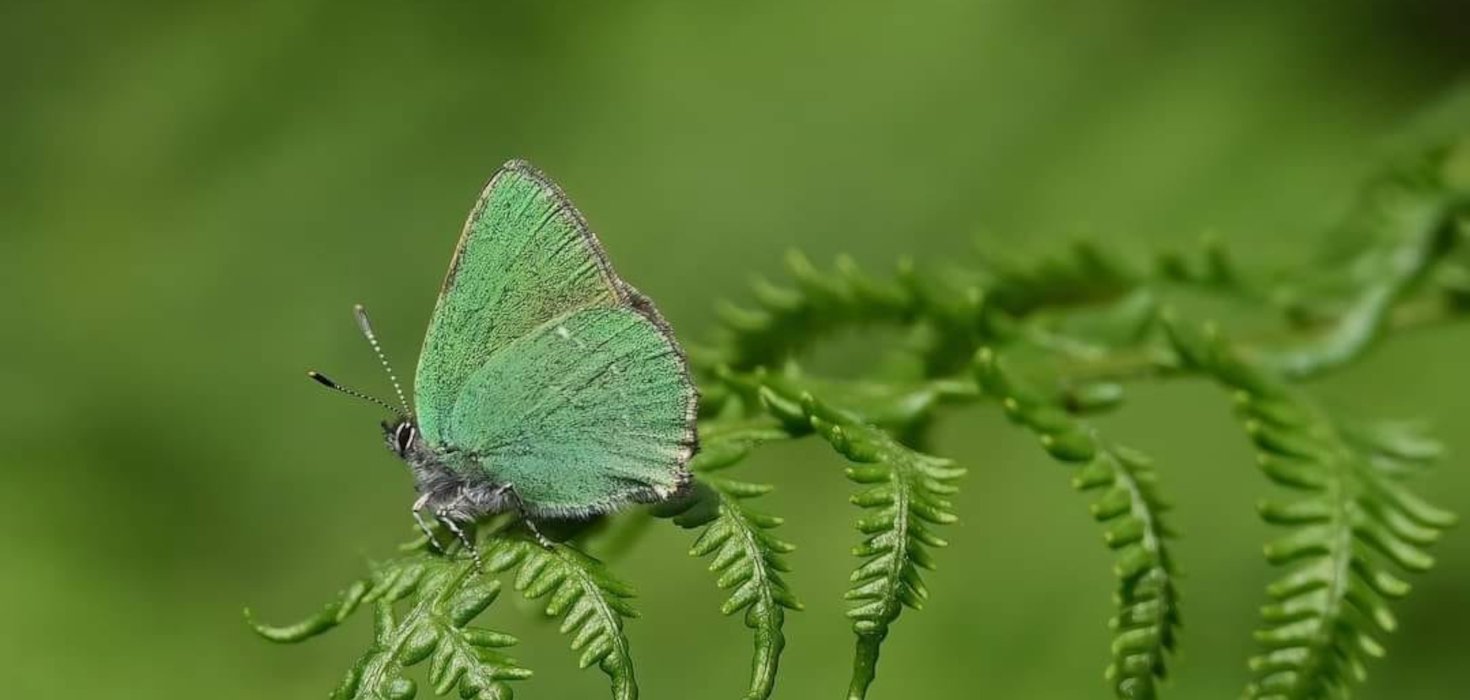Green Hairstreak
Callophrys rubi
National Status
Found throughout the UK with some losses in recent years. Population trend 10 years -34%: since 1976 -41%.
West Midlands Status
Scattered occurrences across the region but scarce in Herefordshire. Likely under-recorded, seldom common, range probably stable. Population trend 10 years – decreasing.
Habitat
Found in a wide range of habitats reflecting the variety of foodplants it utilises. Heaths, moors, bogs, quarries, brownfield sites, scrubby grassland and woodland clearings.
Flight Period
Mid-April to late June with some noteworthy July and even August records from the Malvern area. Peak emergence is mid-April to early June.
Hotspots
Hotspots: Whixall, Wem and Fenn’s Mosses in Shropshire, Cannock Chase in Staffordshire and the Malvern Hills in Worcestershire.
Caterpillar Food Plant
The main foodplants are Bilberry (Vaccinium myrtillus), Broom (Cytisus scoparius), Common Bird’s-foot-trefoil (Lotus corniculatus), Common Rock-rose (Helianthemum nummularium), Dyer’s Greenweed (Genista tinctoria) and Gorse (Ulex europeaus). Bramble (Rubus fruticosus), Buckthorn (Rhamnus cathartica), Cross-leaved Heath (Erica tetralix) and Dogwood (Cornus sanguinea) are also used.
Life Cycle
| Jan | Feb | Mar | Apr | May | Jun | Jul | Aug | Sep | Oct | Nov | Dec | |||||||||||||||||||||||||||||||||||||
| Egg | ||||||||||||||||||||||||||||||||||||||||||||||||
| Larva | ||||||||||||||||||||||||||||||||||||||||||||||||
| Pupa | ||||||||||||||||||||||||||||||||||||||||||||||||
| Adult | ||||||||||||||||||||||||||||||||||||||||||||||||
